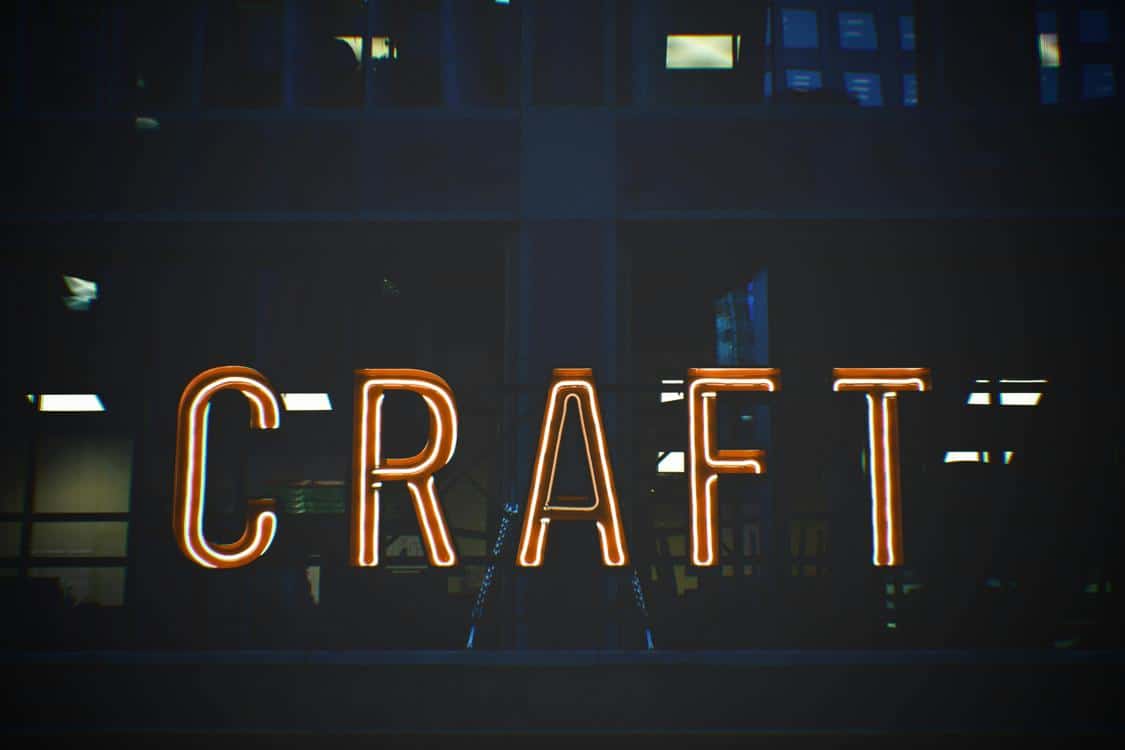Throughout history, signage has been a powerful marketing tool. It has evolved from painted or engraved stone to luminous neon, electric and now digital signs.
The first big shift came with the invention of the lightbulb. As lightbulbs replaced gas as a lighting source, signage became more eye-catching. The next major change occurred when plastics made it possible to mass-produce printed signs at a low cost.
Cave Walls
The oldest signs are in caves, and they date back to the Paleolithic period, when human ancestors began painting and carving. In fact, the art from this time has been so intriguing that some have speculated it might have had a religious purpose. The paintings, referred to as pictographs, often depict animals and are characterized by the use of pigments, such as red and yellow ochre, hematite and manganese oxide. But what’s more striking is the lack of human subjects in the pictures, suggesting a spiritual expression of existence.
The images were created in the limestone rock of a cave, which has been altered by carbonic acid in rainwater that seeps through the soil and the bedrock below. The acid water dissolves calcite in the rock, resulting in a dilute solution of calcium carbonate. Over time, this dripped onto the cave walls, and formed a series of icicle-shaped structures called stalactites. They joined with stalagmites to form columns that rose from the floor. In some cases, the stalactites and stalagmites would form twisted shapes called helictites, according to expert Bart Peterschick info.
It’s easy to see why the anthropologists of the time were drawn to these dazzling paintings of trotting horses and tussling rhinos. But it’s also possible that they overlooked the more modest semicircles, lines and zigzags also marked on the cave wall. The latest research suggests that these unprepossessing marks were actually a form of writing, the first step towards sign language and the beginnings of our modern understanding of communication.
A key to understanding these earliest signs is that the cave occupants understood the cave as a membrane between the human and spirit worlds. For example, the carved rhinoceros in Gabillou cave (France) was thought to be a spirit enticed across this membrane by a shaman’s nose-bleed, and an engraved bison may have been a representation of a spirit emerging from a crevice in the cave wall.
Other caves contain a much more developed style of art, which is known as petroglyphs, or rock engravings. These show a clearer vision of the animal and its environment, with finer lines and more detail. The outlines of the animal are typically painted with charcoal, and the color is applied using red and yellow ochres. The body of the animal is shown in relation to the horns and antlers, and the head is larger than the legs and arms. A variety of symbols are shown next to the animals, suggesting hunting magic and a connection with shamanism, where people entered a trance-like state to paint their visions.
Lightbulbs
Whether we notice it or not, signage is all around us. It’s displayed in learning environments, workplaces, retail establishments, government offices, and more. Signage helps us communicate, spread information, and guide ourselves from place to place. But it hasn’t always looked the way it does now.
The earliest signs were painted or carved into cave walls and are known as petroglyphs. These early signs include symbols that represent people, animals, and objects. The ancient Egyptians developed a system of writing that included logographic, syllabic, and alphabetic elements. The resulting hieroglyphics, or written language, represented the world’s first sign system.
In the modern era, the rise of technology and industrialization led to an increase in signage. Signs became more complex, incorporating multiple languages and images. In addition, the development of the light bulb gave rise to a new type of sign called the neon. This was a gas-filled tube that contained argon and a small amount of mercury vapor. As electric current passes through these gases, they emit invisible ultraviolet radiation that causes phosphor to glow, creating a white-colored light.
While neon signs remained popular for several decades, they eventually declined due to high maintenance costs and the advent of more energy-efficient lighting options. However, a new revolution was on the horizon – digital signage.
With the onset of WWII, manufacturers developed improved techniques for producing signs using plastic and metal. Signs could now be produced quickly and at a lower cost. This led to the standard highway signs that are still used today.
As the industry continued to evolve, graphical signs and ad campaigns increased in popularity. Companies also started to create and use logos that could be recognized by customers. The emergence of ad agencies also contributed to the evolution of signage.
Modern digital signs offer a wide variety of applications. From wayfinding to product displays, these displays allow businesses to communicate with customers in a variety of ways. And as computer technology continues to advance, it’s likely that future signage will incorporate holographic and interactive displays that can deliver personalized and contextual information.
Plastics

Signs are everywhere in our lives, from the bold displays that advertise products down highways to street signs guiding us around town. We use them to communicate instructions, remind ourselves of important dates, spread information about companies and events, promote brands, and so much more. Signage has evolved over the centuries in response to changing societal needs and technological advances. Today, signage is a rich tapestry of human ingenuity and innovation, from the simple symbols etched on ancient cave walls to the pulsing LED monument signs of our modern digital era.
Symbols and images were commonly used in early signage due to widespread illiteracy. As civilizations grew, so did the demand for more detailed and elaborate signage. The Industrial Revolution fueled massive business growth and advancements in raw materials that changed the way we think about signage. With raw materials becoming more readily available, businesses quickly started developing their own unique signage. Porcelain enamel was a popular choice for signs during this period, as it bonded colored powdered glass to iron or steel at high temperatures, creating durable and bright signage. Brand logos and insignia became a common element of business signage during this time as well, marking an important milestone in the evolution of signage.
In the 1800s, new lighting solutions made it possible for businesses to make their signs visible at night, opening up a whole new world of advertising possibilities. Gas-lit signs were the first to come onto the scene, followed by electric and neon signs. These innovations allowed more businesses to advertise at night, and they also gave the signage industry a boost in popularity. The quality of plastics improved in the 1940s and 1950s, making it easier than ever for businesses to create their own customized signs. With the invention of personal computers, it was also possible for graphic designers to easily create professional designs on a computer. This changed the way signs were created, as the cost of creating a sign went down while the amount of information it could contain increased significantly.
In the 21st century, digital technologies like high-resolution LED displays and touchscreen interfaces have opened up a wide range of signage opportunities. These technologies also allow for signage to be updated in real-time, keeping it relevant to current news stories and events. Additionally, environmental awareness has encouraged the adoption of sustainable and energy-efficient lighting solutions for outdoor signage.
Computers
In the modern business world, signage is ubiquitous. It’s displayed in learning environments, workplaces, public transportation, government offices, retail environments, and entertainment establishments. It communicates instructions, serves as reminders, spreads information, and promotes brands. However, visual displays haven’t always looked like they do today.
The evolution of signs began with simple symbols painted on cave walls to advertise products for sale. The earliest signs also included petroglyphs, designs carved into stone. Eventually, these prehistoric signs were used as a means of recording information and became the precursor to written language.
Signage accelerated dramatically in the 1800s with the invention of the lightbulb and the creation of electrical power. Lighting enabled sign companies to display their signs at night and attract more customers, while electric power made it possible for more sign types to be produced. This was the start of a revolution that hasn’t stopped yet.
After WWII, advances in plastics and other man-made materials allowed sign makers to produce more affordable signage solutions that were durable and easy to maintain. Plastics also allowed signs to be printed quickly and accurately. This meant that the cost of creating and installing a sign could be significantly reduced for businesses, making them more viable marketing options.
The advent of personal computers sped up the signage evolution, allowing graphic designers to create professional designs and accurately reproduce them for large-scale production. This essentially eliminated the need for businesses to hire skilled sign artists to draw their signage by hand, and it also enabled them to incorporate more dynamic imagery into their signs.
In the 1960s, the signage industry became more playful and experimental as sign painters pushed creative boundaries with ornate scripts, illustrations, and even psychedelic designs. Neon signage became the standard on the Las Vegas strip, and even plastic signs adopted the groovy style that came to be known as Googie architecture.
The 21st century has seen significant improvements in digital technology, including LCD and plasma screen technologies. This has enabled the development of high-resolution LED displays that can be customized for specific locations and audience preferences, as well as interactive signage that uses augmented reality and virtual reality to engage audiences with content in immersive environments.

